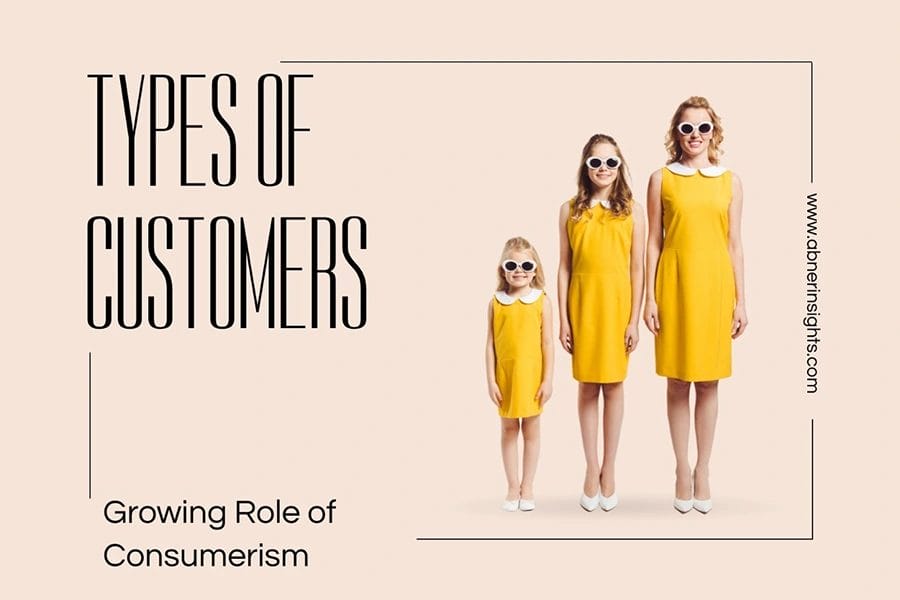In next 10 years, the consumer class, also termed the middle class, at a global scale is expected to reach 5 billion people – that is 1.5 billion more people with increased purchasing power than today. The rise of the middle class in emerging economies, year-round promotional offers, and the increase in business models targeting people at the ‘bottom of the income pyramid’, are collectively making consumption patterns an increasingly important force.
Consumer behaviour, brand awareness, and customer perception matters. Such forces are dynamically changing the market landscape, with indicative trends towards rise of more challenger brands and swifter shift in the market pie. Today the oldest brand is not necessarily the most popular brand but the one that is most innovative.
To understand customer behaviour and be better equipped to develop successful business strategies, to generate the highest profit, it is necessary to first identify and segment different types of customers.

There are seven types of customers. Each with unique traits, but it is important to note that your customers can be a combination of these seven types of customers.
1. Loyal Customers
The most important type or top of the pyramid customer. They are loyal to a brand or product and recurringly come back for more. Evangelists who sell your products through favourable recommendations, word-of-mouth or through reviews on social media platforms.
You can boost their joy for your product by making them brand ambassadors. You should provide them a platform where they can share their joy for the product. #Coke genius marketing strategy. It doesn’t sell a drink in a bottle, but company strives to sell “happiness” in a bottle.
2. Need-based Customers
These customers buy your product because they have an immediate need and know that your product will satisfy it. They know what they are looking for and you will struggle to upsell to them.
You can move these customers to loyal customers by giving them excellent customer experience at different touchpoints. They need to be served quickly.
3. Impulsive Customers
This type of customer usually buys based on feelings. They want to feel good about their purchase. Its easy to upsell to them, and they will usually take it if you have made them feel good about the purchase. When they are ready to make a purchase, you need to make the checking-out stage easy, whether it is online or in a retail store.
#LouisVuitton uses value-based pricing in its marketing mix for its products. Since customers perceive the company’s products as high value products, the customers are willing to pay the amount.
4. First-time Customers
Your customer has made a purchase. Now what? It is important to make them successful in using your product. This means that the instructions manuals should be well designed. If you are selling a service, you should have a proper user onboarding system which works seamlessly.
#Braun grooming and hair removal product packaging are a classic example of how creatively and artistically instructions manuals can be printed on the packaging.
5. Potential Customers
This customer may not have a need for your product or is still in the early stages of researching the product they want to buy.
You need to nurture this customer and warm them up to your product. You can do this by giving them accurate and relevant information. You also need to show them the value of your product. There should also be people near them who are willing to answer their questions if they are in your retail store or you should have your social media icons and contact us page easily visible on your website.
6. Discount Customers
“What discount do you offer?” may be the first words you will hear from this customer. They are more interested in the price of the product then they are, necessarily, interested in the product you are selling. Because for much of the time they are only using your product for the discount, they will easily move on to another company if they offer your customer a better deal. They won’t react to upselling.
If you do want to change these customers to loyal customers, you should offer them added value and explain to them clearly how your deal works.
7. Wandering Customers
These are window shoppers who come into your store to kill a bit of time before meeting up with a friend or going to a movie. They may ask you random questions about the things you sell. Wandering customers draw the largest amount of traffic to the company while making up the smallest percentage of sales revenue.
You can change this customer into a new customer by offering them accurate answers to the questions they ask and by targeting their aspiration quotient.
